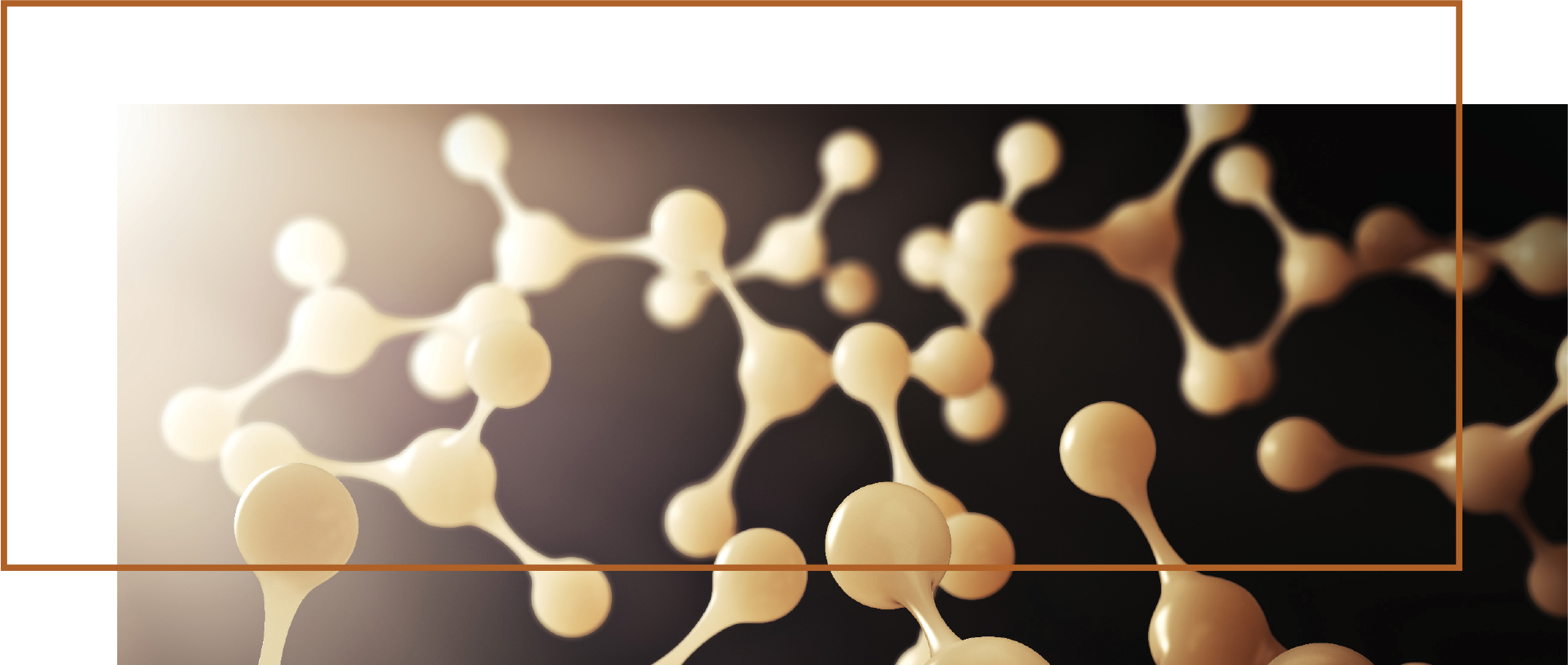SAMe
SAMe, or S-adenosyl-L-methionine, is a molecule known as the ‘universal methyl group donor’. SAMe is required for three major metabolic pathways: transmethylation, transsulfuration, and polyamine synthesis. This means it is critical for proper methylation to occur, as well as being a precursor for glutathione and several types of amino groups. SAMe is a clinically relevant molecule with uses ranging from supporting basic cellular health to enhancing mood.9
Vitamin B12 (Methylcobalamin)
Methylcobalamin must be acquired through dietary intake as it is not produced in the body. This metabolically active form of vitamin B12 works directly within the cells. Methylcobalamin is required for MTR and MTRR enzymes to function appropriately. It protects the integrity of myelin nerve sheaths, thereby protecting nerve function. Recent research suggests that methylcobalamin may also cross the blood-brain barrier to directly support healthy neuron function by preserving the integrity of myelin sheaths and consequently protecting nerves.2,10,11
Folate/5-MTHF
Folate, also known as vitamin B9, is an essential nutrient acquired through diet that is required for proper methylation, cell growth, and has many benefits ranging from cardiovascular health to fertility support. MethylGenic contains the active, naturally occurring form of folate, 5-methyltetrahydrofolate (5-MTHF), which is considered superior to folic acid. It can be challenging for people to consume enough folate through diet alone, so supplementation with high-quality ingredients like those provided by MethylGenic is invaluable.10,12
Selenium (L-Selenomethionine)
An extremely important mineral, selenium helps the body recycle and produce antioxidants to prevent the damage caused by reactive oxygen species (ROS). Inflammation and oxidative stress are known to damage cells and shorten telomeres. Increasing selenium consumption can protect telomere length both by managing oxidative stress and by stimulating the telomerase enzyme coded by the TERT gene.13–15
Zinc (Lipoate)
Zinc lipoate is exclusive to Alimentum Labs and is a highly bioavailable form of zinc. Supplementation with zinc lipoate may help prevent DNA damage and improve antioxidant levels.16
Betaine HCl
Betaine, a derivative of choline also known as trimethylglycine, supports the body’s normal betaine-homocysteine methyltransferase (BHMT) pathway. It aids in recycling vitamin B12 and preventing high levels of homocysteine. Additionally, it assists the mitochondria in managing oxidative stress through the NO/ONOO cycle.17,18
Niacinamide (Vitamin B3)
Niacinamide is an important B vitamin that is vital for maintaining stable energy levels and is involved in balancing SAMe levels in the body, one of the most important methyl group donors.19,20
Vitamin B6 (Pyridoxine AKG)
Vitamin B6 is an integral coenzyme used in the homocysteine-methionine cycle, while alpha-ketoglutarate is an essential intermediate in the tricarboxylic acid cycle, which is a primary part of cellular energy production. Alpha-ketoglutarate can also regulate the methylation of DNA histones, which may potentially be able to manage age-related conditions and delay aspects of aging.21,22
Riboflavin-5-Phosphate (Vitamin B2)
Riboflavin-5-Phosphate is a bioavailable form of vitamin B2, which is one of the most important B vitamins involved in the folate-methionine cycle. It serves as a cofactor in several enzymatic reactions that directly enable DNA methylation reactions to occur.22
D-Biotin
Vitamin B7, also known as vitamin H, supports normal cellular energy processes and glucose metabolic processes. Additionally, it binds in lower concentrations to certain histones and may help prevent DNA damage.23
Molybdenum
Molybdenum is one of the basic elements that exists in our universe. It is also a cofactor, assisting essential enzymes in the body to function properly. Molybdenum serves as a cofactor for the sulfite oxidase enzyme, which converts the metabolic intermediate sulfite to sulfate. The accumulation of sulfite can be extremely harmful because it inhibits appropriate protein bonding of enzymes and reduces levels of cysteine and glutathione. These issues can significantly alter the function of proteins and enzymes throughout the body, leading to widespread dysfunction.24
Centella Asiatica
Centella asiatica, also known as Gotu Kola, is a powerful medicinal herb traditionally used in Southeast Asia. It contains a phytonutrient known as asiaticosides, which has the ability to prevent cellular death, improve wound healing, and protect against reactive oxygen species (ROS). Recent studies show that the compound DLBS1649 from C. asiatica can prevent telomere shortening, which may contribute to its anti-aging effects. C. asiatica contains B and C vitamin complexes and is a potent antioxidant due to its carotenoids. It can stimulate cell turnover, particularly in the skin, and has been shown to have neuroprotective effects, which may be used to manage changes associated with aging.25–28
Choline L-Bitartrate
Choline is a micronutrient acquired through diet. It serves as a precursor to several important molecules involved in major biological reactions. Choline can be converted to acetylcholine, which is utilized in the brain and the general nervous system. Additionally, it can also be broken down into betaine. MethylGenic offers the most bioavailable form of choline on the market, choline L-bitartrate.29
Serine
Serine is an important amino acid critical for cellular health and neuroprotection. It stimulates genes to produce stabilizing neurotransmitters and helps prevent systemic and neurological inflammation. Serine also serves as a precursor to cysteine, making it yet another critical player in the body’s homocysteine cycling.30
Carnosine
Carnosine possesses anti-aging, neuroprotective, and gene-regulating abilities. By reactive oxygen species (ROS) and harmful metals, it protects the body, especially the brain, from inflammation and premature aging. Carnosine can also inhibit the activity of monoamine oxidase-A (MAO-A) enzyme, which tends to increase in activity with age. Supplementation with carnosine can help inhibit MAO-A activity, which can then help preserve normal brain activity in young, healthy brains.31
Rhodiola Rosea
Rhodiola rosea is a plant native to cold, northern regions of Asia and Europe. It has been used in traditional Chinese medicine to aid in stroke recovery. Rhodiola rosea contains a unique compound known as salidroside, which provides epigenetic effects by modulating the PI3K/AKT pathway. This pathway is integral to the cell cycle, contributing to the cellular protective effects of this ingredient in MethylGenic.32
Ascorbyl Palmitate
This is a form of vitamin C that is highly bioavailable due to its fat-soluble nature resulting from its bond to palmitate oil. Vitamin C is a powerful antioxidant that protects cells and DNA from reactive oxygen species (ROS). It has been shown to be an epigenetic modulator by controlling levels of methylation in DNA. Moreover, it may even have anti-cancer effects due to its ability to regulate gene expression.33,34
Theanine
Theanine is an amino acid derived from green tea. It helps protect cells from damage caused by environmental toxins and the buildup of harmful metabolic intermediates. It also has the ability to improve mood and cognitive function due to its structural similarity to the neurotransmitter glutamate.35,36
Ribonucleic Acid (RNA)
RNA is a molecule present in most organisms. Similar to DNA, it is used to hold genetic information. In MethylGenic, RNA is provided as a source of nucleotides for cells to aid in DNA repair and the building new cells.37
Boron Glycinate
Boron is a trace mineral acquired through diet that offers numerous health benefits. It helps to build and support the function of important molecules like SAMe and nicotinamide adenine dinucleotide (NAD+). Both of these molecules are critical in proper cellular function and energy production. Boron has also been shown to possess antioxidant, anti-inflammatory, hormone-stabilizing, and bone-strengthening abilities.38




